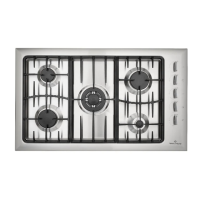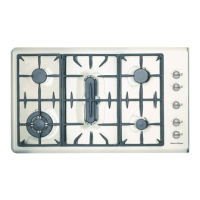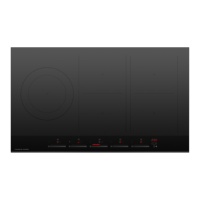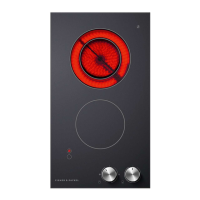14
9.0 PROBLEM SOLVING (excluding Auto Reignition)
9.1 Gas Doesn't Light - No Spark (See also Section 6)
Check source of mains supply.
9.1.1 Check electrodes/burners are clean (use rubbing Alcohol and an old tooth brush).
9.1.2 Check that spark gap is not too wide (burners sitting right).
9.1.3 If only one or two burners are getting a spark, swap over high tension ignition leads at the ignition box.
If burners which were igniting before are no longer getting a spark, fault is in the box. If burners which
were igniting before are still igniting after changing leads, fault is in the ignition lead/electrode.
9.1.4 Check continuity from the box to the electrode and from the burner or earthing point to the earth
connection on the box.
9.1.5 Check that high tension leads are not coiled, or lying on the basepan, as this may result in a loss of
voltage to the electrode. (Use correct length leads and locate in correct position.)
9.2 Gas Doesn't Light - Spark but no Ignition
9.2.1 Check gas supply (including output pressure of regulator).
9.2.2 Check if any burners light (with match).
9.2.3 Check spark gap (set to approximately 3mm).
9.2.4 Check spark earthing to correct position on burner.
9.2.5 Check that high tension leads have not been coiled, as this may result in a loss of voltage and a spark
of insufficient energy to ignite the gas. (Use correct length high tension leads and locate correctly.)
9.3 Flame Doesn't Stay When Gas Valve is Released (See also Section 7)
9.3.1 Remove knob and retry without the knob.
There have also been instances of the clamping brackets being overtightened and distorting the panel
enough to allow the knob to bottom out.
9.3.2 Check the flame envelopes the tip of the thermocouple.
Check the thermocouple tip is free from carbon or other deposits.
Check the thermocouple for any physical damage e.g. kinks, corrosion at the tip.
Check the thermocouple nut is tight on the gas valve to ensure electrical contact.

